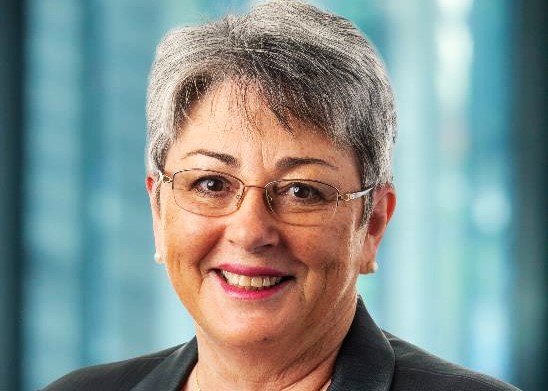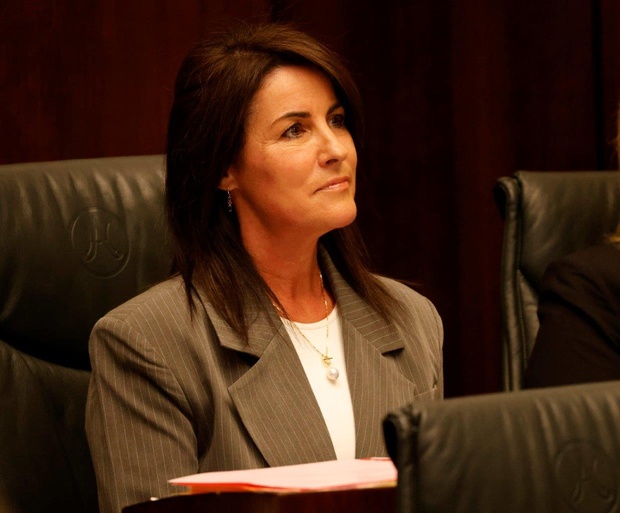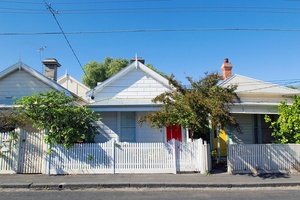With just 53 per cent of students meeting the standard for a Year 12 certificate or equivalent, Tasmania ranks as the second worst in the country, only behind the Northern Territory, and well below the 76 per cent national average.
This is despite the current Liberal Government, which came to power a decade ago, promising to lift Year 12 retention and attainment rates.
The review, to be headed by Education Services Australia chair Vicki Baylis, will consider demographics, socio-economic characteristics and the relationship of all levels of education.
Baylis is a former chief executive of the Northern Territory Department of Education and brings more than 40 years of experience across a variety of education roles in Queensland and the Territory.
While Tasmania’s Education Minister Jo Palmer said the attainment figures, which are calculated by the Productivity Commission, don’t paint an accurate picture of the situation in her state, she did acknowledge that some areas of the education system were a “real concern”.
“Some of the data is not being read and interpreted properly, in particular with attainment,” she told reporters.
“In Tasmania if you want to look at children who are engaged in Years 11-12 (plus) children who are also in TAFE (or doing) apprenticeships, we’re up around ... 80 per cent.
“That is comparable with other states and territories.”
Palmer also said the Government had ushered in important structural changes to the education system in the last decade that will have immeasurable benefits in the years to come.
“We have delivered significant change in the education system over the past ten years, including extending high schools to years 11 and 12 and changing the law to ensure young people are in education or training,” she said.
Tasmania is towards the back of the pack when it comes to NAPLAN results, while attendance rates across Years 1-10 are the second worst in the nation.
“We have recently introduced nation-leading structured literacy and phonics programs in our schools but are always open to further improving our education system,” Palmer said.
The state’s Labor opposition has in recent weeks ramped up calls for a review.

Vicki Baylis started her career as a classroom teacher and school principal in North Queensland before becoming Executive Director responsible for all government schools in that part of the state. In 2010 she transitioned to the Northern Territory Department of Education, where from 2016 she was chief executive.
University of Tasmania vice chancellor Rufus Black has also said ‘major reform is needed’ to fix the state’s public education system.
“It’s in trouble. We’ve seen declining completion rates, declining numbers of students achieving an ATAR, and declining numbers of students doing STEM subjects – with only a few hundred students studying in this area right across Years 11 and 12,” he told the ABC’s Stateline program.
“As Tasmanians we need to absolutely care about education and make it a top priority. Why? Because by the time we get to 2050, 80 per cent of all jobs are going to require tertiary education… We’re so far short of that at the moment.”
Australian Education Union Tasmania president David Genford said budget cuts must be ruled out for the review to be taken seriously.
He said any review would likely expose existing failures caused by under-funding.
“The department currently can’t cope with curriculum work, principal support or even paying educators on time,” Genford said.
He also questioned whether the department could afford to make improvements following the review.
Last month, Genford said the first step to lifting learning in Tasmania is for all public schools and colleges to be urgently funded to the agreed minimum level – “not kick the can down the road with more reviews”.
“Underfunding is driving excessive workloads, and driving teachers from the profession, and until that’s fixed there won’t be any significant or sustained improvement in what Tasmanian students are able to achieve,” Genford said.
“Funding enables schools to provide for small group work, extra tailored support with literacy and numeracy, and more one-on-learning which many students need.”
Terms of reference for the review, slated to be completed and released publicly by the end of 2024, are expected to be drawn up in coming weeks.
Palmer didn’t commit to implementing the review’s recommendations, saying she didn’t want to pre-empt any findings.
Meanwhile, the Tasmanian Government has released Change for Children, a 10-year Strategy for upholding the rights of children by preventing, identifying and responding to child sexual abuse.
Premier Jeremy Rockliff said the Government has worked closely with more than 400 contributors, including victim-survivors and their supporters, children and young people, to deliver the evidence-based strategy.
The State Government has also released the first progress report on the implementation of recommendations from the Commission of Inquiry into the Tasmanian Government’s Responses to Child Sexual Abuse in Institutional Settings.
The Progress Report outlines the actions underway to implement the phase one recommendations identified for response by July 1.
To view the Change for Children strategy, the first two-year Action Plan, all companion documents and the Progress Report, click here.
Tasmanians have an additional three months to have their say on the Change for Children strategy via the website.
(with AAP)














